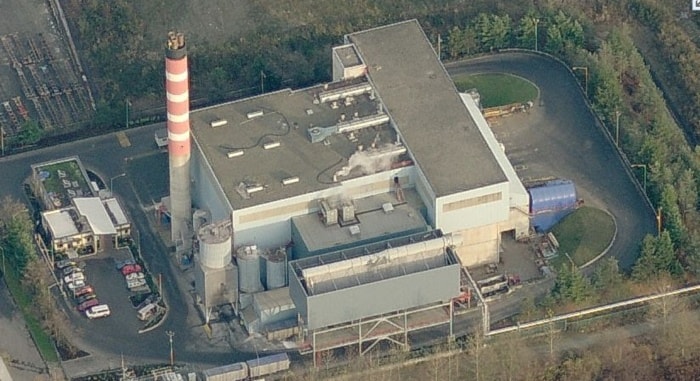Metro Vancouver's garbage incinerator in Burnaby may help heat thousands of homes in the new River District neighbourhood springing up in southeast Vancouver.
The regional government is looking at building an eight-kilometre pipeline to carry hot water heated at the waste-to-energy plant to the Parklane Homes development, also known as the East Fraserlands.
The concept is the latest example of the growing trend toward the use of district energy, where water or steam is piped throughout a densely built area to efficiently heat buildings and avoid the need for each unit to have its own furnace or water tank.
The $3-billion 130-acre River District development is to include 7,000 residential units in multiple towers, with retail businesses and other amenities.
"It's a significant revenue opportunity for us," said Metro integrated planning division manager Ken Carrusca.
Exactly how much Metro could earn from the sale of the hot water depends on who builds the twin water pipes, one to carry hot water to the homes and the other to bring cooler water back to the incinerator.
If the region, partnering with the City of Burnaby, builds the pipeline, it would incur that cost but earn more by selling hot water right at River District, Carrusca said.
Alternatively, Metro could sell the water at a lower price right from the waste-to-energy plant and leave Parklane or another private partner to build the pipeline.
Some Metro politicians have objected to turning over the pipe project and control of the water to a private firm.
Metro currently earns about $9 million a year from selling some of the steam the incinerator produces to the adjacent Norampac paper mill and using the remainder to generate electricity it sells to BC Hydro.
Helping heat River District would be considerably more profitable than generating electricity, but Carrusca had no estimate yet of how much more Metro might earn under either of the construction scenarios.
Metro aims to ensure any pipeline to River District can also be expanded to hook up to other buildings in Burnaby in the future.
If Metro doesn't supply waste-heated water, Parklane would build its own natural gas power plant to heat water in River District.
Piping Metro's water there would reduce greenhouse gas emissions by an estimated 8,000 tonnes per year.
The development would still have a secondary gas-fired plant as a backup and to supplement and times of peak demand.
Similar district energy systems already exist to heat buildings in downtown Vancouver and in Lower Lonsdale.
The newest to fire up is the one at Vancouver's former Athletes Village development.
The latest projects proposed would be powered by burning wood waste.
UBC is building a plant in partnership with Nexterra Energy to gasify 13,000 tonnes of wood waste per year to create heat and electricity for the university, assisted by an $11-million provincial grant.
And Victoria last month gave $4.7 million to Simon Fraser University to burn construction wood waste to heat the campus and UniverCity residences on Burnaby Mountain and generate most of the power consumed there.
Both projects claim dramatic greenhouse gas reductions by replacing the use of natural gas.
Burning wood is counted as climate-neutral because forests are assumed to grow back and store carbon again.
The City of Surrey is also looking at a district heating system in its City Centre area.
Some Surrey councillors say it would be an ideal fit with a new Metro waste incinerator – if the region gets approval from the provincial government to build more waste-to-energy plants.
Cap-and-trade may cost incinerator
While burning waste can make money for Metro Vancouver, the regional district may soon face big annual bills for the existing waste-to-energy plant's greenhouse gas emissions.
The province's planned cap-and-trade rules could force Metro to pay up to $3 million a year to buy offsets for the incinerator's carbon emissions, according to a staff report.
That's based on a projected offset price of $25 per tonne.
There are differing estimates – based on two different methodologies – of how much carbon the plant emits each year. By the province's accounting method, it's 119,000 tonnes but an internationally recognized counting method preferred by Metro estimates 103,000 tonnes.
The garbage incinerator in south Burnaby is the fourth largest industrial source of greenhouse gas emissions in Metro Vancouver and represents about one per cent of all carbon emissions in the region.
The biggest industrial sources – the Lehigh and Lafarge cement plants and the Chevron oil refinery – account for 75 per cent of industrial carbon emissions.
